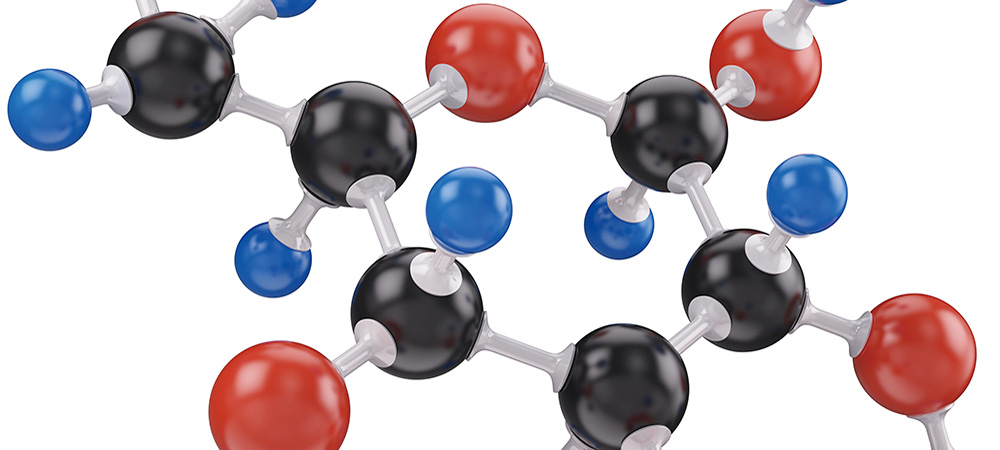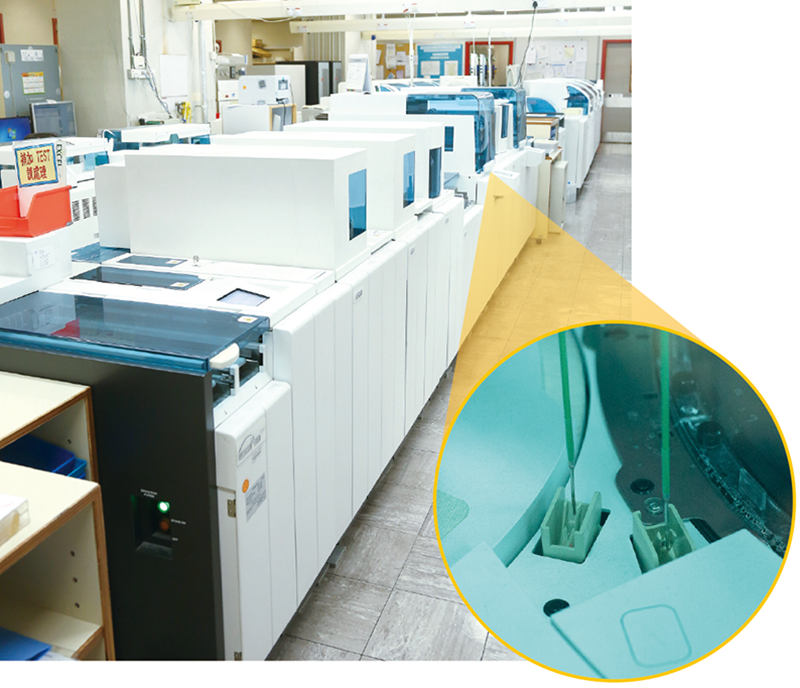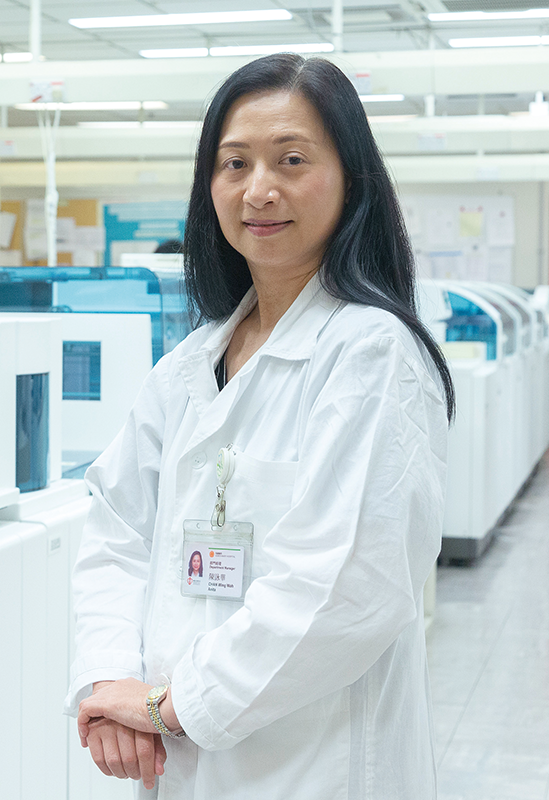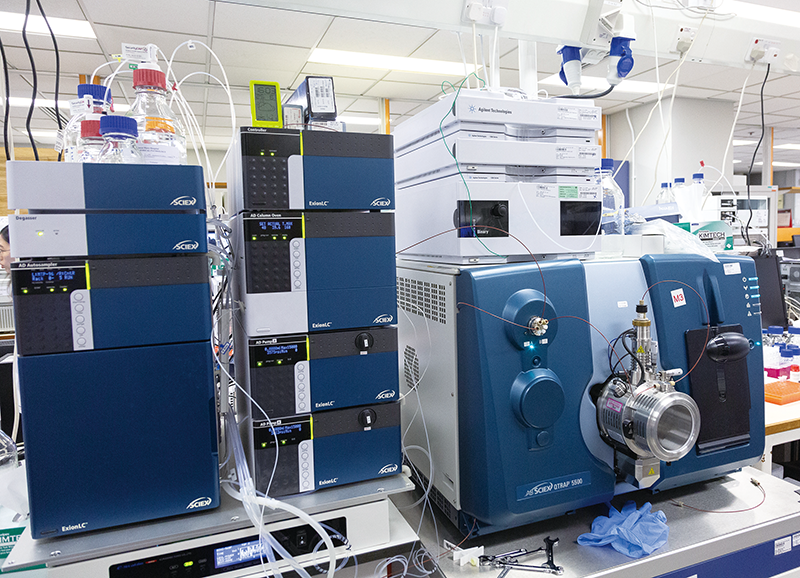Chemical substances: Chemical substances shed light on therapeutic results
Human body is composed of various chemical substances, such as proteins, sugars, lipids, minerals, vitamins, and hormones. These substances are stored in blood, organs, tissue, cells and fluids of the body to maintain body functions. Illnesses strike when body chemistry is disturbed: chemical levels above or below normal range; or abnormal presence of chemicals in body fluids. The role of medical technologist is to find out evidence from patient samples, and thus help doctors screen, diagnose, monitor progress of disease and make prognosis.
QMH Department Manager (Chemical Pathology) Anita Chan exemplifies the role played by medical technologist in a diabetic patient’s journey. The reading on glucose meter only reflects the blood sugar level of the patient at the moment of test. To get an overall picture of the average blood sugar levels over the last two to three months, glycated haemoglobin in blood will be tested. The normal glycated haemoglobin value ranges from 4% to 6%, and diabetic patients should keep it below 7%.
When the body processes sugar, glucose in bloodstream attaches to haemoglobin and it is not easy to fall off. Since red blood cells in human body survive for 120 days before renewal, measuring glycated haemoglobin reflects how well blood glucose is controlled in the last two to three months. It helps clinicians formulate suitable medical treatment plan and advise patient on behavioural change if necessary. If the patient takes medicines and is on diet just before consultation, the doctor will know the patient ‘cheats’ from the glycated haemoglobin test result, although his blood sugar level shown on glucose meter is acceptable.
The chemical pathology laboratory in QMH investigates nearly 5,000 samples a day, including blood, urine, cerebrospinal fluid and ascites. Laboratory results are usually generated within one hour (emergency case) or two-and-a-half hours (non-emergency case). The Total Laboratory Automation System performs nearly 30 types of chemical tests simultaneously, processing up to 650 samples per hour at its peak. After medical technologist inputs required test items, the sample is automatically transferred to different checkpoints for centrifugation, categorisation, sample and reagent dispensing, reaction and testing, analysis, review and counter‑checking. The automated system reduces risk of human error and improves efficiency. Medical technologist will review every difficult case, in which some may need to be verified by scientific officer or chemical pathologist.![]()
A millilitre of cerebrospinal fluid debunks neurological disorders
In 2018, QMH Chemical Pathology Laboratory developed a new testing method using existing equipment which analyses within two months patient’s congenital lack of neurotransmitters with only one millilitre of cerebrospinal fluid. With less interference on the test result, it can identify the causes of various neurological disorders such as growth retardation, involuntary movements and cramps, giving insights to early diagnosis and treatment for patients. The unique method has been accredited and recognised by an international External Quality Assessment Program named ERNDIM (European Research Network for evaluation and improvement of screening, diagnosis and treatment of Inherited Disorders of Metabolism).
● Meet the ‘Watsons’ at laboratory
COVER STORY
● The revelation of specimen: From disease prevention to effective cures
● Microbes: Stop microbe transmission with speedy identification
● Blood: Decode the secret of health from blood
● Cells and tissue: Tell malignancy from 20-minute test
● Chemical substances: Chemical substances shed light on therapeutic results
WHAT'S NEW
● Locum scheme create all-win situation
● Geneticist: Nothing ventured, nothing gained
● Add human touch to HA numbers game
● Your views count in streamlining management processes!
HELEN HA
● Work arrangement under ‘extreme condition’
● New eRecruitment system makes job search in HA easy and fast
FEATURE
● Turn stress into motivation: PPCI connects
● Service extension benefits more patients
● The heart of sterile supplies
● How are special devices washed?
STAFF CORNER
● Professor John Leong Chi-yan awarded Gold Bauhinia Star




